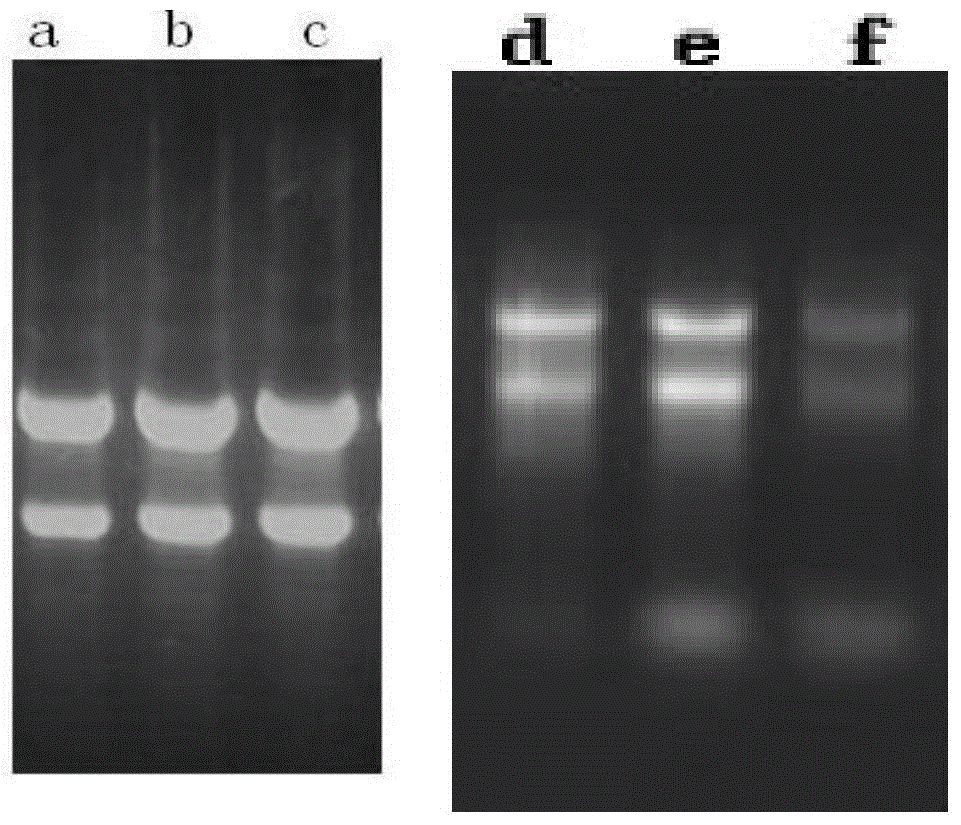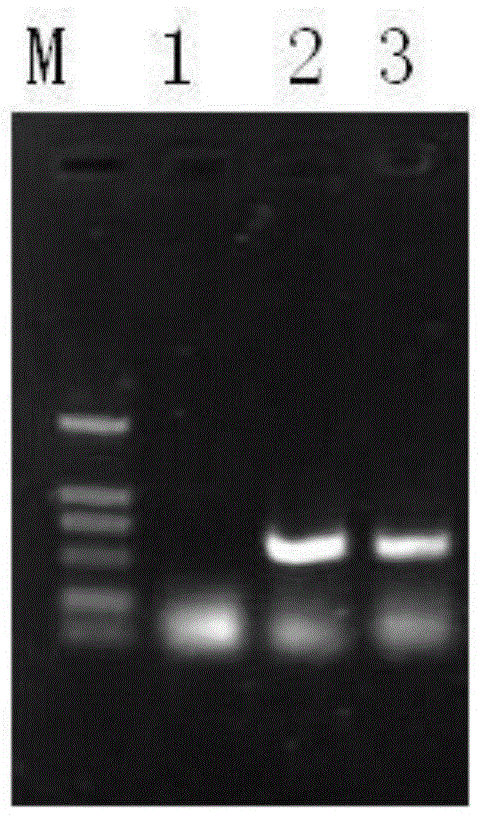Method for extracting RNA (ribonucleic acid) from plant material containing rich polysaccharides and polyphenols
A technology of plant materials and polyphenols, which is applied in the field of RNA extraction, can solve the problems of the measurement of interference RNA ultraviolet absorption, etc., and achieve the effect of simple operation, high concentration and short extraction time
- Summary
- Abstract
- Description
- Claims
- Application Information
AI Technical Summary
Problems solved by technology
Method used
Image
Examples
Embodiment 1
[0034] Embodiment 1: Extraction of Phalaenopsis leaf total RNA
[0035](1) Take 1 g of fresh Phalaenopsis leaves, put them into a mortar pre-cooled by liquid nitrogen, add liquid nitrogen and grind them fully until they are powdery, add 1000 μL of extraction buffer A immediately, vortex for 30 seconds, and place them flat at room temperature for 10 minutes; The extraction bufferA described above consists of the following components:
[0036]
[0037] (2) Add 300 μL of buffer B (stored at 4 degrees Celsius), fully invert and mix for 30 seconds, centrifuge at 12,000 rpm for 5 minutes, and transfer the supernatant to another centrifuge tube; the extraction buffer B is KAC (potassium acetate) with a concentration of 5M;
[0038] (3) Add isopropanol 1 times the volume of the supernatant to the supernatant, mix well, centrifuge at 12000rpm for 5min, discard the supernatant, and keep the precipitate;
[0039] (4) The precipitate was dissolved in 1000 μL water (RNase-free) contain...
Embodiment 2
[0044] Example 2: Banana stem total RNA extraction for RNA reverse transcription
[0045] (1) Select 0.5g of fresh and well-grown banana stems, put them into a mortar pre-cooled by liquid nitrogen, add liquid nitrogen to grind them fully until they are powdery, add 500ul to extract buffer A immediately, and vortex for 20 seconds. put for 5min;
[0046] The extraction bufferA consists of the following components:
[0047]
[0048] (2) Add 150 μL of buffer B (stored at 4 degrees Celsius), fully invert and mix for 20 seconds, centrifuge at 12,000 rpm for 10 minutes, and transfer the supernatant to another centrifuge tube; the extraction buffer B is KAC (potassium acetate) with a concentration of 5M;
[0049] (3) Add isopropanol 0.7 times the volume of the supernatant to the supernatant, mix well, centrifuge at 12000rpm for 5min, discard the supernatant, and keep the precipitate;
[0050] (4) The precipitate was dissolved in 500 μL water (RNase-free) containing 20ug / ml DNaseI...
Embodiment 3
[0054] Embodiment 3: Peanut pod total RNA extraction is used for RT-PCR experiment
[0055] (1) Select fresh and tender peanut pods in good growth condition, put them into a mortar pre-cooled by liquid nitrogen, add liquid nitrogen and grind them thoroughly until they are powdery, immediately add 750ul to extract buffer A, vortex for 25 seconds, and place them flat at room temperature 7.5min;
[0056] The extraction bufferA consists of the following components:
[0057]
[0058]
[0059] (2) Add 150 μL of buffer B (stored at 4 degrees Celsius), fully invert and mix for 25 seconds, centrifuge at 12,000 rpm for 7.5 minutes, and transfer the supernatant to another centrifuge tube; the extraction buffer B is KAC (potassium acetate) with a concentration of 5M
[0060] (3) Add isopropanol 0.8 times the volume of the supernatant to the supernatant, mix well, centrifuge at 12000rpm for 5min, discard the supernatant, and keep the precipitate;
[0061] (4) The precipitate was di...
PUM
 Login to View More
Login to View More Abstract
Description
Claims
Application Information
 Login to View More
Login to View More - R&D
- Intellectual Property
- Life Sciences
- Materials
- Tech Scout
- Unparalleled Data Quality
- Higher Quality Content
- 60% Fewer Hallucinations
Browse by: Latest US Patents, China's latest patents, Technical Efficacy Thesaurus, Application Domain, Technology Topic, Popular Technical Reports.
© 2025 PatSnap. All rights reserved.Legal|Privacy policy|Modern Slavery Act Transparency Statement|Sitemap|About US| Contact US: help@patsnap.com



